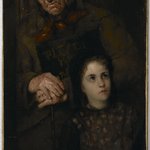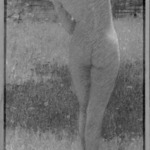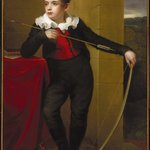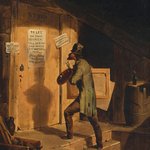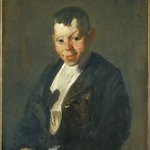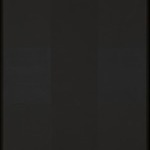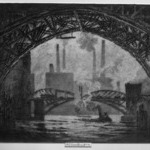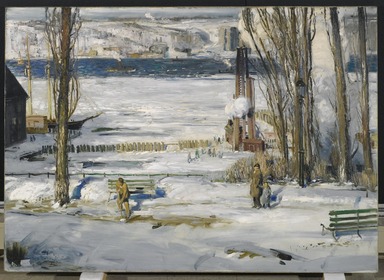
A Morning Snow--Hudson River
George Wesley Bellows
American Art
On View: American Art Galleries, 5th Floor, Counterparts
Assured, slashing strokes of a heavily loaded brush capture the effects of morning light reflected from freshly fallen snow. This view shows the Hudson River and New Jersey from Manhattan’s Upper West Side. George Wesley Bellows conveyed the sense of the city awakening through his depiction of the man shoveling snow, people going to work, boats plying the river, and smoke and steam interrupting the still, crisp atmosphere.
Elements of this composition move toward abstraction. The elevated vantage point reduces the illusion of depth, while horizontal and vertical components, seen particularly in the fence and tall trees, provide a subtle gridlike structure.
Elements of this composition move toward abstraction. The elevated vantage point reduces the illusion of depth, while horizontal and vertical components, seen particularly in the fence and tall trees, provide a subtle gridlike structure.
MEDIUM
Oil on canvas
DATES
1910
DIMENSIONS
45 1/16 x 63 3/16 in. (114.5 x 160.5 cm)
frame: 49 1/4 x 67 1/4 x 3 1/2 in. (125.1 x 170.8 x 8.9 cm) (show scale)



SIGNATURE
Signed lower left: "Geo Bellows."
COLLECTIONS
American Art
ACCESSION NUMBER
51.96
CREDIT LINE
Gift of Mrs. Daniel Catlin
PROVENANCE
1910, purchased from the artist by Hugo Reisinger of New York, NY; January 18, 1916, purchased at American Art Association, New York, "Valuable Pictures by Foreign and American Masters Collected by the Late Hugo Reisinger", lot 39, by D. Charles; between 1916 and 1942, provenance not yet documented; by 1942, acquired by Horace Havemeyer and Doris Anna Dick Havemeyer (Mrs. Horace Havemeyer) of New York; by 1951, acquired from Horace and Doris Havemeyer by Doris Havemeyer Catlin (Mrs. Daniel Catlin) of New York; 1951, gift of Doris Havemeyer Catlin to the Brooklyn Museum.
Provenance FAQ
EXHIBITIONS
MUSEUM LOCATION
This item is on view in American Art Galleries, 5th Floor, Counterparts
CAPTION
George Wesley Bellows (American, 1882–1925). A Morning Snow--Hudson River, 1910. Oil on canvas, 45 1/16 x 63 3/16 in. (114.5 x 160.5 cm). Brooklyn Museum, Gift of Mrs. Daniel Catlin, 51.96 (Photo: Brooklyn Museum, 51.96_PS1.jpg)
IMAGE
overall, 51.96_PS1.jpg. Brooklyn Museum photograph, 2007
"CUR" at the beginning of an image file name means that the image was created by a curatorial staff member. These study images may be digital point-and-shoot photographs, when we don\'t yet have high-quality studio photography, or they may be scans of older negatives, slides, or photographic prints, providing historical documentation of the object.
RIGHTS STATEMENT
No known copyright restrictions
This work may be in the public domain in the United States. Works created by United States and non-United States nationals published prior to 1923 are in the public domain, subject to the terms of any applicable treaty or agreement.
You may download and use Brooklyn Museum images of this work. Please include caption information from this page and credit the Brooklyn Museum. If you need a high resolution file, please fill out our online application form (charges apply).
The Museum does not warrant that the use of this work will not infringe on the rights of third parties, such as artists or artists' heirs holding the rights to the work. It is your responsibility to determine and satisfy copyright or other use restrictions before copying, transmitting, or making other use of protected items beyond that allowed by "fair use," as such term is understood under the United States Copyright Act.
The Brooklyn Museum makes no representations or warranties with respect to the application or terms of any international agreement governing copyright protection in the United States for works created by foreign nationals.
For further information about copyright, we recommend resources at the United States Library of Congress, Cornell University, Copyright and Cultural Institutions: Guidelines for U.S. Libraries, Archives, and Museums, and Copyright Watch.
For more information about the Museum's rights project, including how rights types are assigned, please see our blog posts on copyright.
If you have any information regarding this work and rights to it, please contact copyright@brooklynmuseum.org.
RECORD COMPLETENESS
Not every record you will find here is complete. More information is available for some works than for others, and some entries have been updated more recently. Records are frequently reviewed and revised, and we welcome any additional information you might have.







